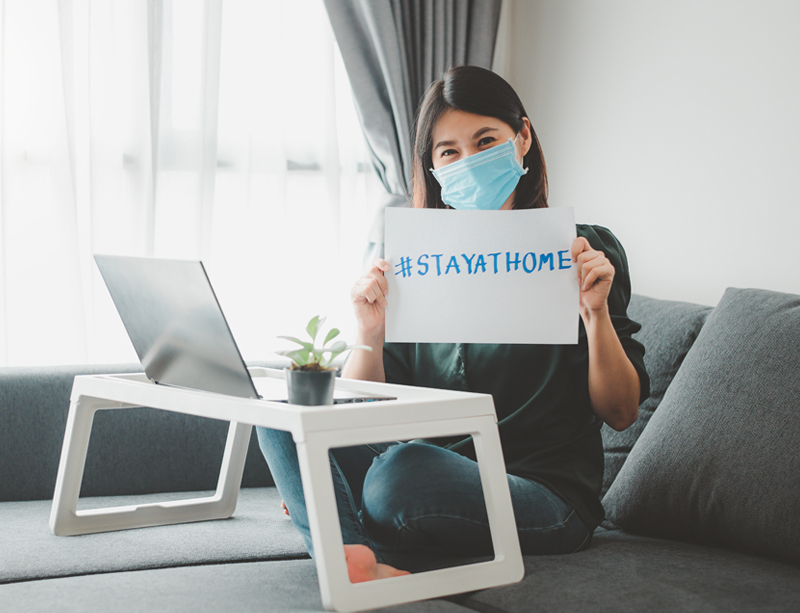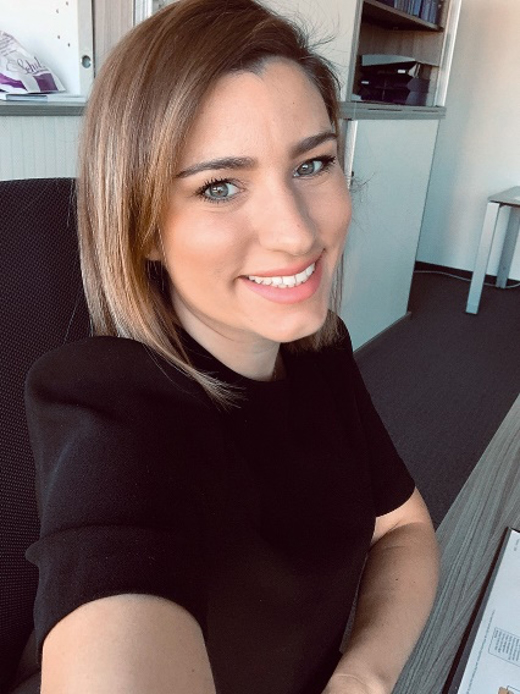
#stayathome
To protect ourselves and others during from Covid-19 during the pandemic, colleagues around the world were asked to work from home from March onwards. So what is working from home like? And what about people who cannot work from home? Living and working under changed conditions – Kuraray employees talk about their personal experiences in a special time.
Dominique Buono, HR Training & Development Partner on the transition to digital working

The whole thing was a massive change for Training & Development. Around 90 percent of the training planned for 2020 was face-to-face. Vocational training was also entirely on-site. Suddenly, we had to do a complete rethink and redesign our courses!
The team responsible for vocational training, had to consider how they could provide training in this new situation. Together, they decided to provide virtual training, especially for administrative jobs. However, that is virtually impossible for technical apprentices. For them, it was necessary to find a solution where they could work partly at home and partly at Kuraray. Most of the theoretical training takes place online.
By contrast, personnel development runs entirely online at present. We have redesigned everything, from management courses to MS Office training. The online offerings have been very well received. We are even thinking of keeping some of them when the pandemic is over.
Markus Englert, fitter and member of the Works Council, POVAL plant reports on the new daily routine in production

Especially working with a face mask is very difficult for us. You start sweating under it very quickly. Now I work with a full face shield. Although that isn’t much better, at least I get more air! And it keeps me safe, which is the most important thing.
At first, working from home was a bit strange for us fitters, but now we’ve got used to it: we conscientiously work through the tasks our supervisors set us.
(What’s even more stressful than working with a face mask is worrying about what will happen next. That’s something my colleagues worry about too. Will we be put on short-time working or worse? I think that’s something that goes around in people’s minds. I can’t really say anything is better for me personally – except that it has given me a chance to experience working from home.)
My eye-opener
That so many people really do keep to the rules (social distancing, wearing a mask, contact restrictions, etc.). Personally, I didn’t expect people to take it all on board so quickly.
Please continue to stick to the rules so the “dark days” pass as soon as possible. And stay safe and healthy.

Julia Kowalewski, Organizational Development & Communications reports on the shift of a large group event to digital space
We were already in the middle of planning our third European Future Days when it became clear that a face-to-face event with over 100 participants would not be possible in the near future. But a cancellation of the event was never up for discussion – it soon became clear that it should take place digitally.
Without hesitation, we made a change in the organising team: digital tools had to be found with which a large group could work effectively and new focus topics had to be set. Since the focus was now on other topics, the agenda was completely restructured.
My eye-opener
All colleagues have fully committed themselves to this adventure. There were great learning effects on all sides: we have become much more confident in using virtual tools and are not afraid to implement large workshops digitally – it even has some advantages and will certainly be used in normalized times. Above all, it has shown how flexibly we can react to a changed environment when it becomes necessary.
Until the next face-to-face event can take place, there will be at least one more virtual event. In this way, we will maintain global exchange even in times of social distancing.




